To Prev. Page
IMES Newsletter:2025 BOK/ERI - BOJ/IMES Joint Research Workshop
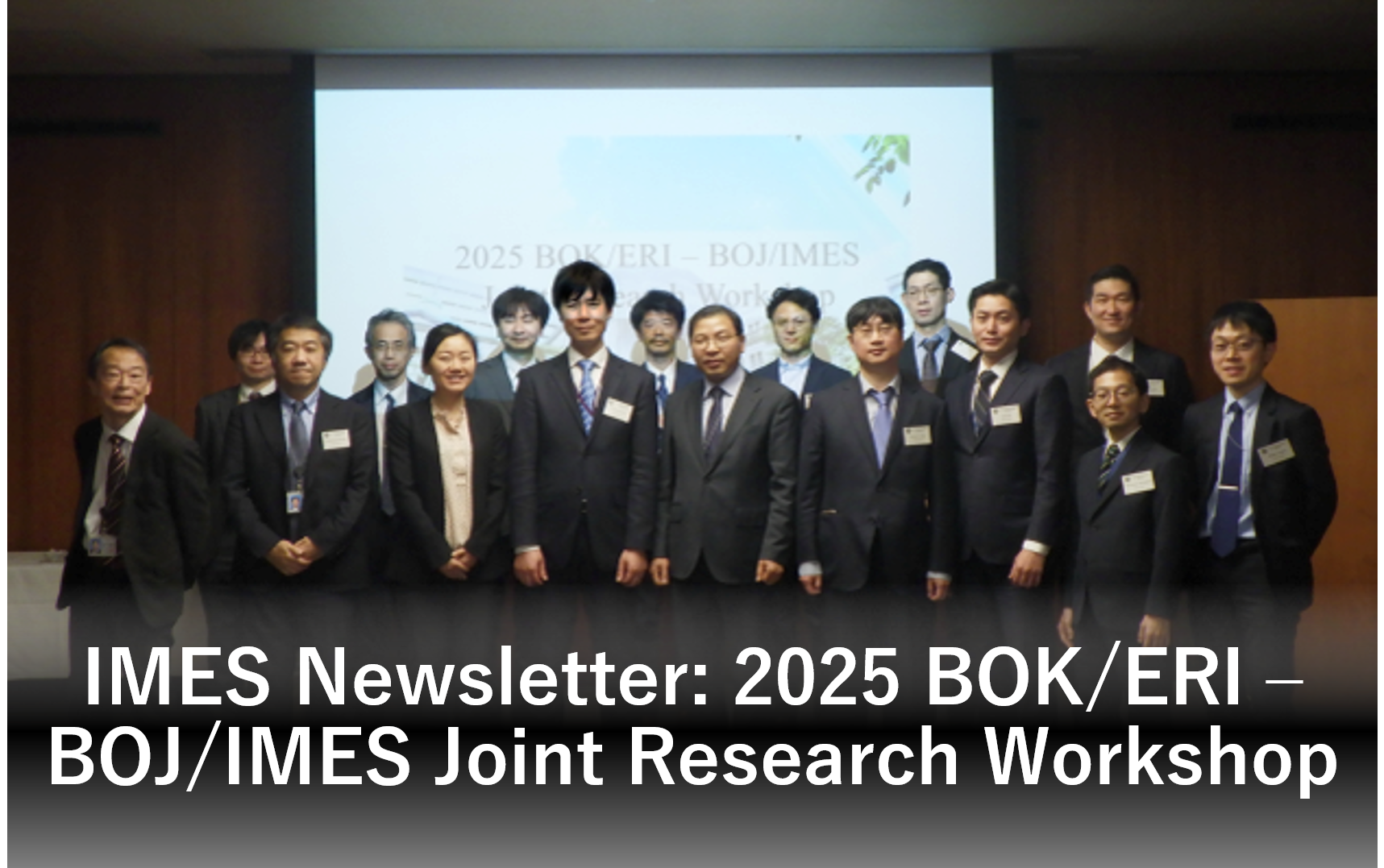
The Bank of Korea Economic Research Institute (BOK-ERI) and the Institute for Monetary and Economic Studies of the Bank of Japan (BOJ-IMES) co-hosted a workshop at the head office of the BOJ on February 27, 2025. This is the 8th such workshop since the program began in 2017. Researchers from the Bank for International Settlements Representative Office for Asia and the Pacific in Hong Kong (BIS-HK) and from Japanese academia, as well as from BOK-ERI and BOJ-IMES, participated in lively discussions at the workshop.
The workshop opened with remarks from Daisuke Ikeda, Head of the Economic and Financial Studies Division of BOJ-IMES. He said that this workshop would contribute to a further deepening of research and policy discussions through the exchange of views and ideas among researchers, particularly those from South Korea and Japan, which are facing common challenges such as demographic changes and the promotion of pro-growth innovation. Following the remarks, two economists from BOK-ERI and BOJ-IMES, respectively, and an economist from BIS-HK presented papers. Finally, the Director General of BOK-ERI, Taehyoung Cho, concluded the workshop with closing remarks.
1. Forecasting Recessions Using Machine Learning
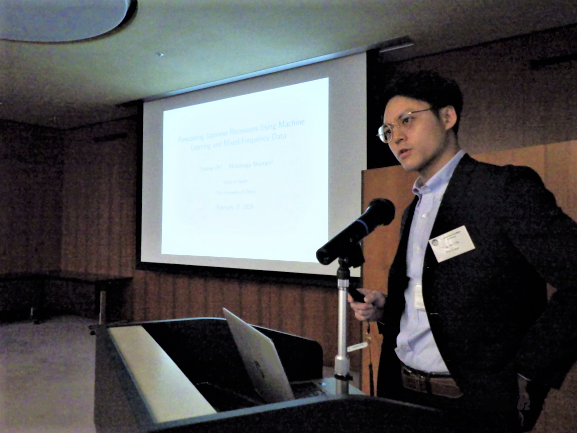
Forecasting the future course of an economy is difficult in general. It may become even more difficult when economic expansion turns to a downturn. Typical approaches to forecasting the Japanese economy include the use of economic models and indexes of business conditions. In recent years, other approaches have been proposed, such as data-dependent methods using high-frequency or alternative data, and there is room for deepening the use of such methods.
Yusuke Oh (BOJ-IMES) developed and evaluated a machine learning-based model to forecast Japanese recessions.(1) He employed multiple machine learning algorithms—including Support Vector Machines, Random Forests, and LightGBM—and compared these to conventional logistic regression methods to assess forecasting accuracy in the short, medium, and long terms (defined respectively as 3, 6, and 12 months ahead). He also used text data from newspaper articles as alternative data to extract information that may not be captured by conventional economic statistics. The analysis showed that the machine learning models had greater forecasting accuracy than the logistic regression methods, and that incorporating text data improved the performance of forecasting, particularly in the short term.
The usefulness of incorporating text data, as confirmed in this analysis, implies the importance of qualitative information in assessing economic conditions. Going forward, the hope is that more accurate and more convenient economic forecasting methods will be developed through the examination of various data.
2. How Does Demand for Government Bonds Change?
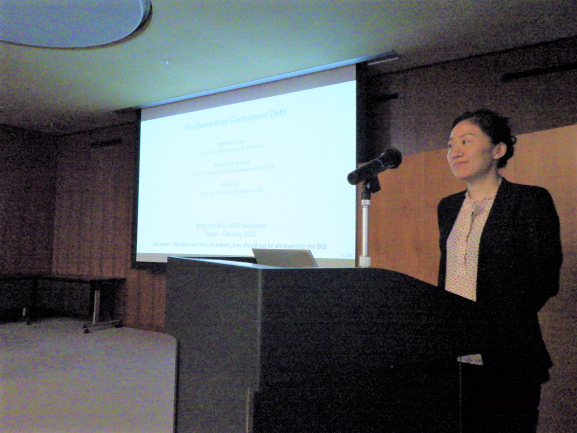
In recent years, among many central banks, there has been a shift towards quantitative tightening (QT), i.e., decreasing the size of the central bank balance sheet that was expanded under past quantitative easing (QE) policies. This shift means a decrease in the presence of central banks as buyers in the government bond market and a resulting change in the composition of bondholders. Against this background, increasing attention is being given to how yields will adjust as central banks normalize their balance sheets, and who will absorb the excess supply.
Dora Xia (BIS-HK) first illustrated how the composition of government bondholders has changed in the U.S., Europe, Japan, and the U.K.(2) In the U.S., for example, QE in the wake of the Global Financial Crisis and the COVID-19 outbreak led to an increase in the central bank's share in the government bond market. In recent years, the central bank's share declined under QT, while the shares of investment funds and commercial banks increased. Next, the study estimated the relationship between long-term interest rates and investor demand for government bonds. The result suggested that, if the supply of government bonds in the market increases by 1% due to QT, long-term interest rates will rise by 8 to 13 basis points.(3) The result also suggested that investment funds and commercial banks have the most elastic demand, which, in turn, leads them to increase their government bond holdings more than other investors as the central bank normalizes its balance sheet.
This is thought-provoking research that aims at capturing changes in the market structure and in demand for government bonds, in terms of investor types, in response to balance sheet reductions by central banks. Going forward, the hope is that more empirical analyses will be added to this research, from which new policy implications will be derived.
3. Challenges for Promoting Innovation
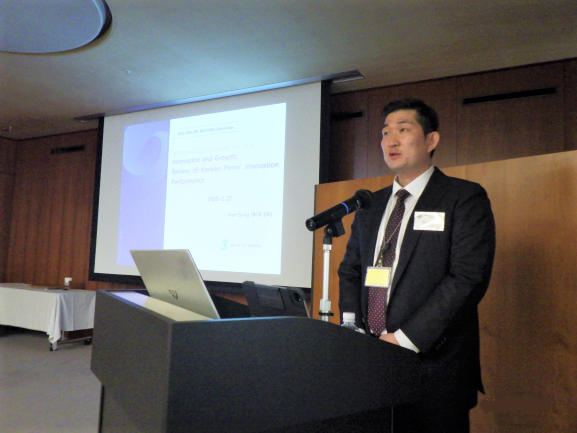
The South Korean economy is facing a serious challenge in terms of labor shortages due to a declining and aging population. Having peaked in 2020, the country's total population is projected to decline to around 50 million by 2040 and to around 37 million by 2070. It has also been pointed out that the economic growth rate could turn negative in the 2040s. Against this background, productivity growth that can offset labor shortages and innovation as a means of achieving such growth are both attracting attention.
Won Sung (BOK-ERI) focused on firm size, research type (basic vs. applied), and access to capital markets in investigating the factors that drive innovation among Korean firms.(4) First, he noted that, while R&D spending among large firms has increased, there has been no corresponding improvement in "innovation quality," as measured by patent citation counts. He pointed out that this low relevance may be owing to a preference for applied research over basic research, driven by short-term profit motives, which potentially causes breakthrough technological development to stall. Next, he pointed out that the productivity of small and medium-sized enterprises (SMEs) improved until the 2000s but has slowed since the 2010s. His analyses showed that the capital funding environment is a key factor underlying this productivity slowdown, as firms with better access to venture capital tend to experience higher productivity growth.
This research implies the importance of policy incentives for long-term technological development and basic research to promote innovation. It also implies the importance of stimulating M&As and IPOs and improving access to venture capital, with a resulting increase in the number of startups, among SMEs. The hope is that understanding of the mechanism involved in firms' innovation will be deepened further.
4. The Relationship between Innovation Types and Firm Growth
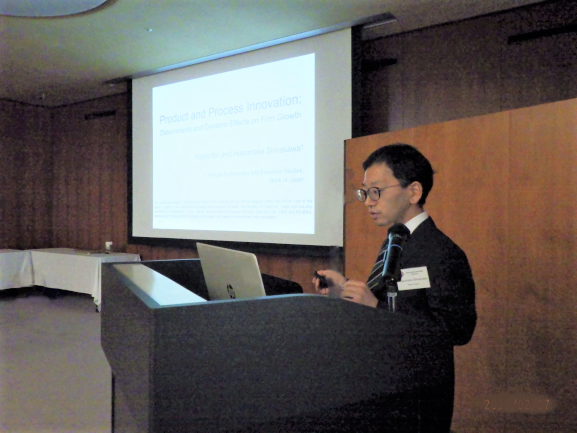
Innovation is a key driver of economic growth, but its effects can differ depending on the type of innovation. Broadly speaking, innovation is categorized into "product innovation," which involves creating new goods and services, and "process innovation," which seeks to improve production efficiency and business processes. Recently, more firms have engaged in process innovation in Japan and Europe, but the economic impact of this is not yet well understood.
Harumasa Shirakawa (BOJ-IMES) used microdata on Japanese firms and showed that the share of firms engaging in process innovation has been rising across industries and firm sizes.(5) An analysis of innovation determinants revealed that competitive pressure promotes both product and process innovation, but as the number of competitors increases considerably, process innovation becomes more dominant. The study further pointed out that, while high market growth rates in a firm's industry stimulate product innovation, they do not significantly affect process innovation. It also found that product innovation boosts future firm sales and employment over several years, whereas process innovation does not exhibit such effects.
These findings imply the potential importance of product innovation for firms' medium-term growth and suggest that competitive pressure can affect different types of innovation differently. Going forward, the hope is that further progress will be made in understanding the underlying mechanism of innovation and its effects.
5. Climate-Related Technologies in South Korea
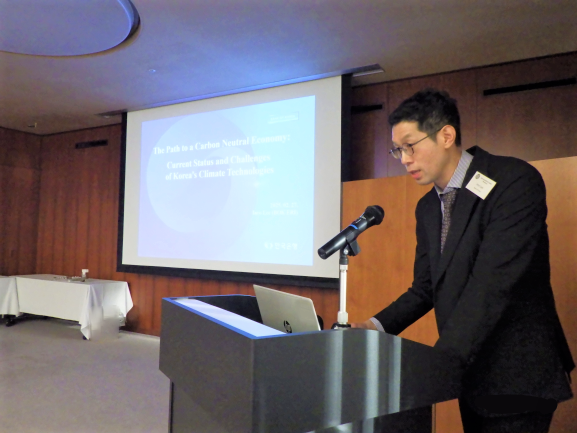
Addressing climate change has become a global issue, and many economies are making efforts towards achieving carbon neutrality, i.e., net-zero carbon emissions. Against this background, the importance of developing and disseminating innovative climate-related technologies has been pointed out. In particular, for South Korea, where energy-intensive manufacturing accounts for a large share of the economy, making progress with climate-related technologies is critical to sustainable growth.
Inro Lee (BOK-ERI) analyzed South Korea's situation regarding climate-related technological innovation using patent data.(6) While the country ranks third in the world in terms of the number of patents filed in this field, the study found two notable characteristics: (1) patents are concentrated among a few large firms, and (2) there is concentration in specific technologies. Specifically, the top four South Korean firms account for about 70% of the country's patent filings, and the presence of SMEs is extremely limited. Additionally, most patents are in the fields of batteries and electric vehicles, and there is relatively little innovation in areas such as carbon dioxide capture, utilization, and storage or emissions reduction in manufacturing processes. Lee pointed out that these characteristics have arisen from an emphasis on short-term results, insufficient government support for R&D, ineffective carbon pricing policies, and a fragile financing environment for SMEs.
To strengthen South Korea's competitive position in climate-related technologies and secure first-mover advantages, the study calls for fundamental policy reforms. It sets out three policy proposals: enhancing government support for R&D, designing effective carbon pricing policies to promote business incentives, and improving funding conditions for startups and SMEs.
6. Closing Remarks

Director General Cho (BOK-ERI) concluded that the workshop discussions had deepened the understanding of critical research themes in East Asia, including recession forecasting, government debt, the nature of innovation, and the transition toward carbon-neutral economies. He ended by expressing the hope of encouraging broader participation from other regions and countries going forward, of promoting greater knowledge sharing, and of strengthening collaboration.
Notes
Click on the number at the end of each item to return to the main text.
- Oh, Y., and M. Shintani. 2025. "Forecasting Japanese Recessions Using Machine Learning and Mixed-Frequency Data." mimeo. (1)
- Eren, E., A. Schrimpf, and D. Xia. 2023. "The Demand for Government Debt." BIS Working Papers No. 1105. Bank for International Settlement. (an updated version is available at https://papers.ssrn.com/abstract=4466154) (2)
- A basis point is a unit used to express changes in interest rates and other financial percentages. One basis point is equal to 0.01 percent. (3)
- Lee, D., W. Sung, J. Chung, E. Choi, D. Kim, and T. Cho. 2024. "Innovation and Economic Growth: Review of Korean Firms' Innovation Performance." In Korea Economic Outlook May 2024, Chapter 3. Bank of Korea. (available at https://ssrn.com/abstract=4916985) (4)
- Ito, Y., and H. Shirakawa. 2025. "Product and Process Innovation: Determinants and Dynamic Effects on Firm Growth." Mimeo. (5)
- Lee, D., W. Sung, S. Shim, I. Lee, S. Jeong, E. Choi, D. Kim, and T. Cho. 2024. "The Path to a Carbon Neutral Economy: Current Status and Challenges of Korea's Climate Technologies." In Korea Economic Outlook November 2024, Chapter 3. Bank of Korea. (available at https://www.researchgate.net/publication/388325926) (6)